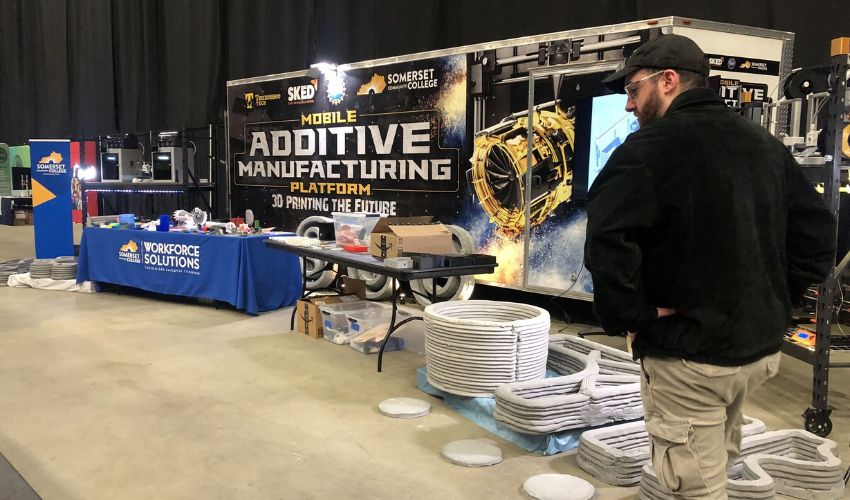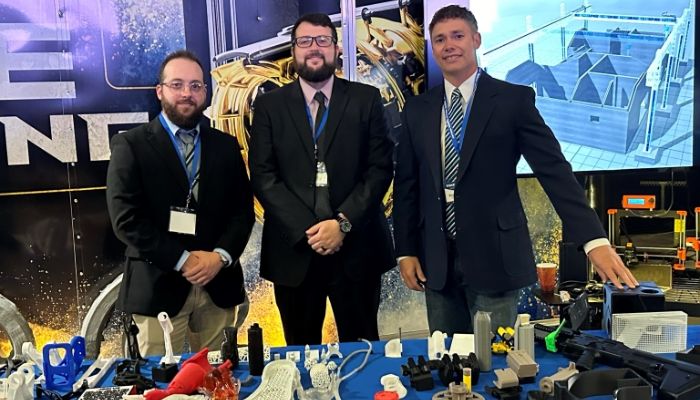How Can Construction 3D Printing Help Rebuild Kentucky After Devestating Floods?

In October of 2023, the US Climate Vulnerability Index was released. In that report, Kentucky was listed as one of the most at-risk states in the nation for environmental disasters. Eastern Kentucky is particularly vulnerable due to its geography, and over the last several years, floods, tornadoes, and other natural disasters have been devastating the area at an alarming rate. In 2022 alone, a flood swept away homes and schools, killing 45 people. In response to all this destruction, Kentucky’s Somerset Community College (SCC) has set its sights on rebuilding, putting additive manufacturing at the forefront of its work.
For over ten years, the KCTCS Additive Manufacturing Center at SCC has developed additive manufacturing education, while implementing it across the state. According to Andrew Clapper, Concrete 3D Printing (C3DP) Project Manager and member of the SCC team, “SCC was the first institution in the nation to develop a statewide additive manufacturing certificate program.” Thanks to partnerships with universities and colleges, and support from the National Science Foundation and the USDA Rural Development, the SCC Team was able to successfully “democratize and rapidly scale 3D printing education.”

The KCTCS Additive Manufacturing team (Photo credits: Somerset Community College)
Now that education is being integrated, Eric Wooldridge, Director of KCTCS Additive Manufacturing Center at SCC said “It is time to do the same with concrete 3D printing.” The C3DP Project aims to provide affordable and resilient housing solutions for surviving and rebuilding after natural disasters. So far, the project has earned funding from the USDA and the Appalachian Regional Commission (ARC).
Why 3D Printing? Benefits and Drawbacks
The C3DP team chose to leverage additive manufacturing to build homes because of the technology’s potential to build durable homes. Concrete 3D printed homes have been cropping up all over the world, and the technology is favorable because it can reduce material needs and construction times. “The cost and timeline to build with this technology compared to conventional methods are markedly different,” Clapper explained. Additionally, these homes can be capable of withstanding floods and tornadoes. The builds can mitigate concerns often associated with floods, like mold and contamination.
Of course, implementing 3D printing in construction work will not happen overnight. The technology needs to be integrated into existing residential building codes and standards. That way, the C3DP project can open doors for others. Wooldridge added, “We also want to demonstrate to contractors and developers how this technology paired with cutting-edge engineering applications can effectively produce affordable, next-generation homes that meet federal financing qualifications.”
The team’s ambitions extend far beyond the immediate construction projects at hand. By showing people what’s possible, they hope to “pave the way for people to replicate and scale what we are doing,” Wooldridge said. “To find ways to put this technology in every school and community and give them the power to innovate. Because that is not only what Kentucky needs, but also our nation and our world.” To learn more about the SCC’s additive manufacturing project, read the press release here.
What do you think of the SCC’s 3D printing mission? Let us know in a comment below or on our LinkedIn, Facebook, and Twitter pages! Don’t forget to sign up for our free weekly Newsletter here, the latest 3D printing news straight to your inbox! You can also find all our videos on our YouTube channel.
*Cover Photo Credit: Eric Wooldridge, LinkedIn






